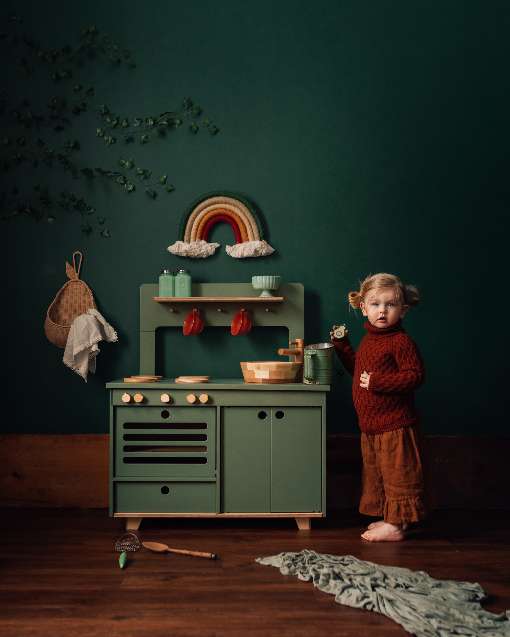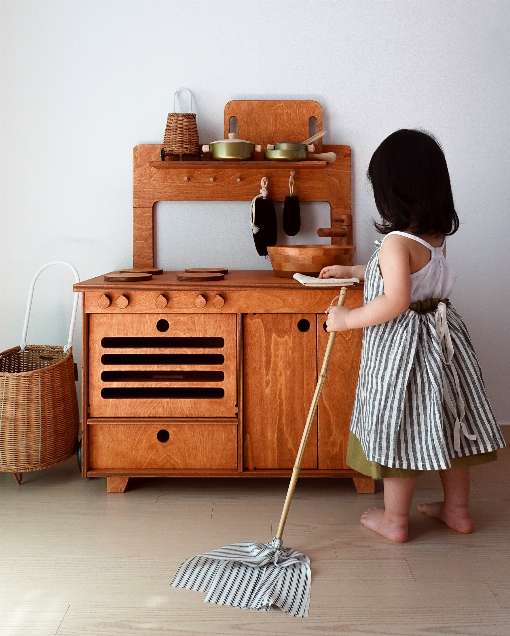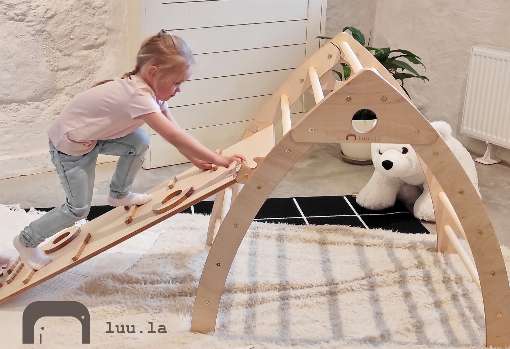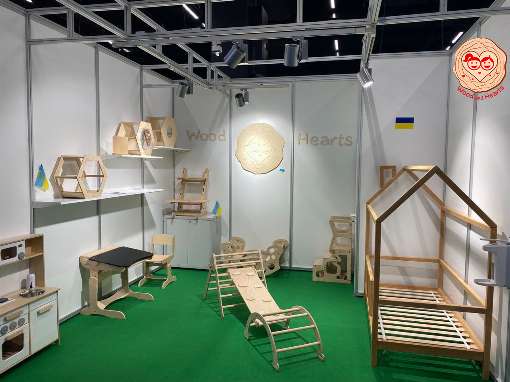17.11.2022
Children's and youth furniture:
Bonn. Around 11.8 million children and young people up to the age of 15 live in Germany's nearly 41 million households. That's about 14 percent of the population. All of these children and young people are also provided with furniture and furnishings by their parents or guardians. "The most important criterion for buying children's furniture has always been the issue of safety. Currently, the topic of material is additionally moving into the focus of the clientele. Parents, single parents and other guardians are placing more and more value on ecological materials that are sustainable," says Ursula Geismann, managing director of the Initiative Furnier + Natur (IFN) and a trend analyst of many years' standing.
At the trade fair "Child and Youth" in September 2022 in Cologne, the trend in the furniture range was quickly visible: honest and sustainable materials score more than mixed materials that have to be disposed of as hazardous waste after use. "It fits this trend that solid wood plays an important role in the children's and youth furniture range. In this regard, a large number of plywood furniture items were conspicuous in the current range," says Geismann. Plywoods consist of several layers of wood veneer that are glued together alternately to create an extremely stable but also flexible board. This also allows round shapes such as bowls or arches to be formed, which is why they are used as an alternative to particleboard or MDF not only for ecological reasons, but also for visual reasons. Plywood is robust and almost "indestructible".
When it came to the keyword optics, it was noticeable that the design of children's furniture is moving towards a clear design language. "This trend indicates that future customers will pay a lot of attention to durability," explains the IFN managing director. Longevity as a criterion for buying furniture clearly combines quality and design. "If children's furniture can still be used for other purposes and functions after its actual use phase, a responsible and prudent decision has been made," says Geismann and continues: "Industry, trade and customers are increasingly consciously taking leave of fast and short-lived consumption. Designers are contributing to this trend by reducing the use of materials to the bare essentials right from the design stage."
To prevent children from growing up in a sober and thoroughly styled domestic furniture world, more and more qualitatively durable play furniture is coming onto the market. In connection with the experiences of homeschooling, designers and educators have developed quite a bit of play furniture for the home, based on the model of daycare centers, which promotes the motor and creative skills and the imagination of young children. "Rocking objects, climbing frames, pegboards and painting boards, seating blocks, multifunctional loungers, for romping and creative design, are now part of the basic equipment of the household with child. In a world becoming increasingly uncertain the home will remain a safe retreat, at which all inhabitant:inside various activities can develop , so Geismann finally.
Initiative Veneer + Nature (IFN)
The Initiative Furnier + Natur (IFN) e.V. was founded in 1996 by the German veneer industry and its partners. Today it is supported by European companies from the veneer industry, the trade and the veneer processing industry as well as trade associations of the wood industry. The aim of the association is to promote veneer as a natural all-rounder.
Further information on the subject of veneer at www.furnier.de or
facebook
linkedin
instagram
Image material:
Images 1+2: Mini kitchen made of veneer plywood in various colors for budding star chefs. Photo: MIDMINI - Plywood Furniture, Latvia
Photo 3: The climbing frame made of veneer plywood invites to active play in your own home. Photo: Luula Ltd, Latvia
Photo 4: This children's furniture is a great place to play. Photo: WoodandHearts, Ukraine
November 16, 2022
Children's and youth furniture:
The desire for quality and durability is on the rise
Bonn. Around 11.8 million children and young people up to the age of 15 live in Germany's nearly 41 million households. That's about 14 percent of the population. All of these children and young people are also provided with furniture and furnishings by their parents or guardians. "The most important criterion for buying children's furniture has always been the issue of safety. Currently, the topic of material is additionally moving into the focus of the clientele. Parents, single parents and other guardians are placing more and more value on ecological materials that are sustainable," says Ursula Geismann, managing director of the Initiative Furnier + Natur (IFN) and a trend analyst of many years' standing.
At the trade fair "Child and Youth" in September 2022 in Cologne, the trend in the furniture range was quickly visible: honest and sustainable materials score more than mixed materials that have to be disposed of as hazardous waste after use. "It fits this trend that solid wood plays an important role in the children's and youth furniture range. In this regard, a large number of plywood furniture items were conspicuous in the current range," says Geismann. Plywoods consist of several layers of wood veneer that are glued together alternately to create an extremely stable but also flexible board. This also allows round shapes such as bowls or arches to be formed, which is why they are used as an alternative to particleboard or MDF not only for ecological reasons, but also for visual reasons. Plywood is robust and almost "indestructible".
When it came to the keyword optics, it was noticeable that the design of children's furniture is moving towards a clear design language. "This trend indicates that future customers will pay a lot of attention to durability," explains the IFN managing director. Longevity as a criterion for buying furniture clearly combines quality and design. "If children's furniture can still be used for other purposes and functions after its actual use phase, a responsible and prudent decision has been made," says Geismann and continues: "Industry, trade and customers are increasingly consciously taking leave of fast and short-lived consumption. Designers are contributing to this trend by reducing the use of materials to the bare essentials right from the design stage."
To prevent children from growing up in a sober and thoroughly styled domestic furniture world, more and more qualitatively durable play furniture is coming onto the market. In connection with the experiences of homeschooling, designers and educators have developed quite a bit of play furniture for the home, based on the model of daycare centers, which promotes the motor and creative skills and the imagination of young children. "Rocking objects, climbing frames, pegboards and painting boards, seating blocks, multifunctional loungers, for romping and creative design, are now part of the basic equipment of the household with child. In a world becoming increasingly uncertain the home will remain a safe retreat, at which all inhabitant:inside various activities can develop , so Geismann finally.
Initiative Veneer + Nature (IFN)
The Initiative Furnier + Natur (IFN) e.V. was founded in 1996 by the German veneer industry and its partners. Today it is supported by European companies from the veneer industry, the trade and the veneer processing industry as well as trade associations of the wood industry. The aim of the association is to promote veneer as a natural all-rounder.
Further information on the subject of veneer at www.furnier.de or
Image material:
Images 1+2: Mini kitchen made of veneer plywood in various colors for budding star chefs. Photo: MIDMINI - Plywood Furniture, Latvia
Photo 3: The climbing frame made of veneer plywood invites to active play in your own home. Photo: Luula Ltd, Latvia
Photo 4: This children's furniture is a great place to play. Photo: WoodandHearts, Ukraine
November 16, 2022



